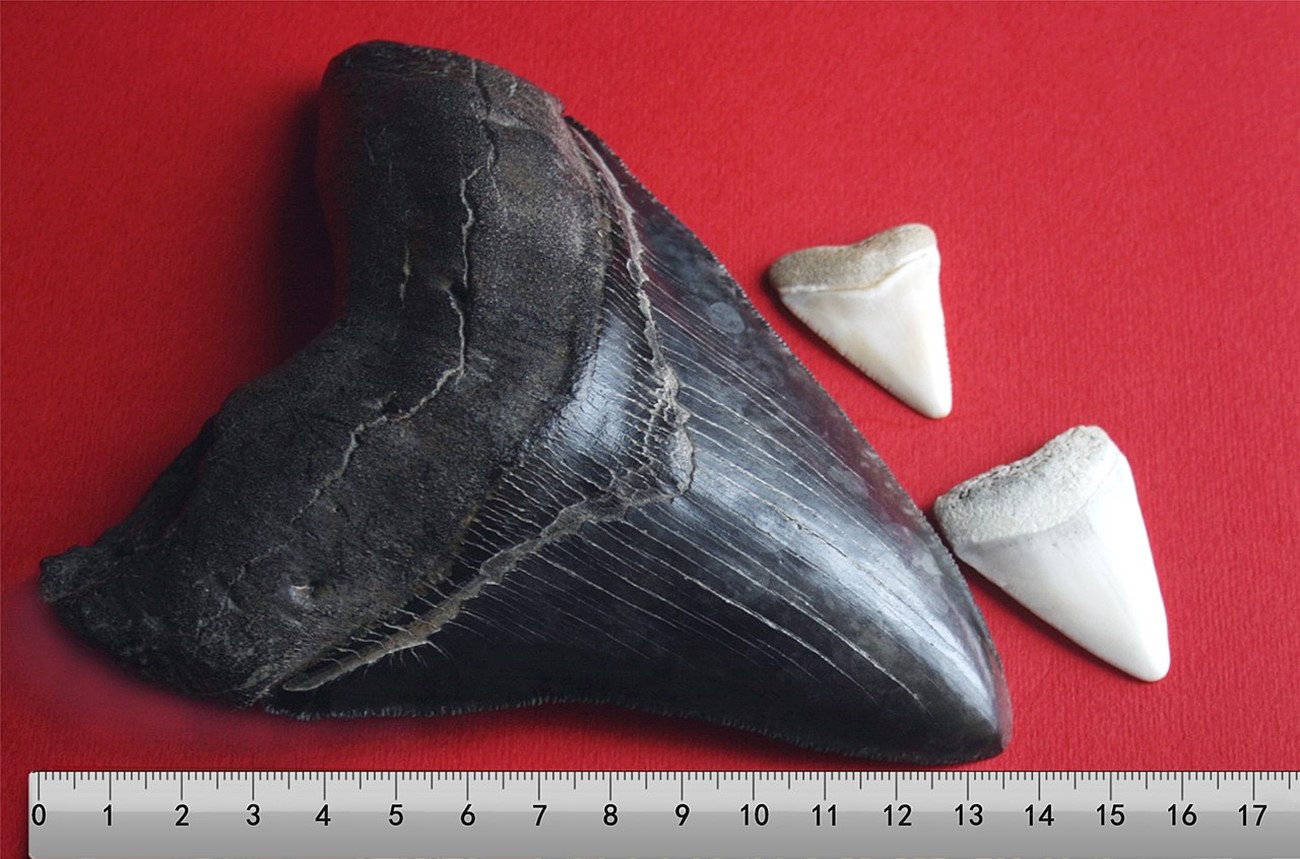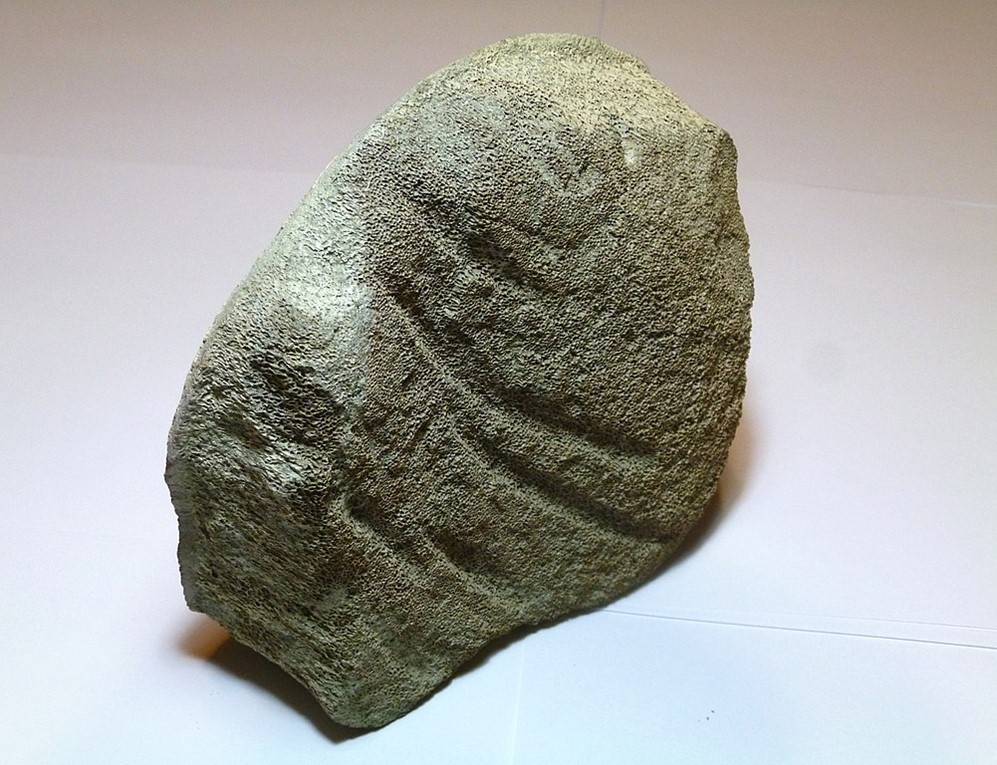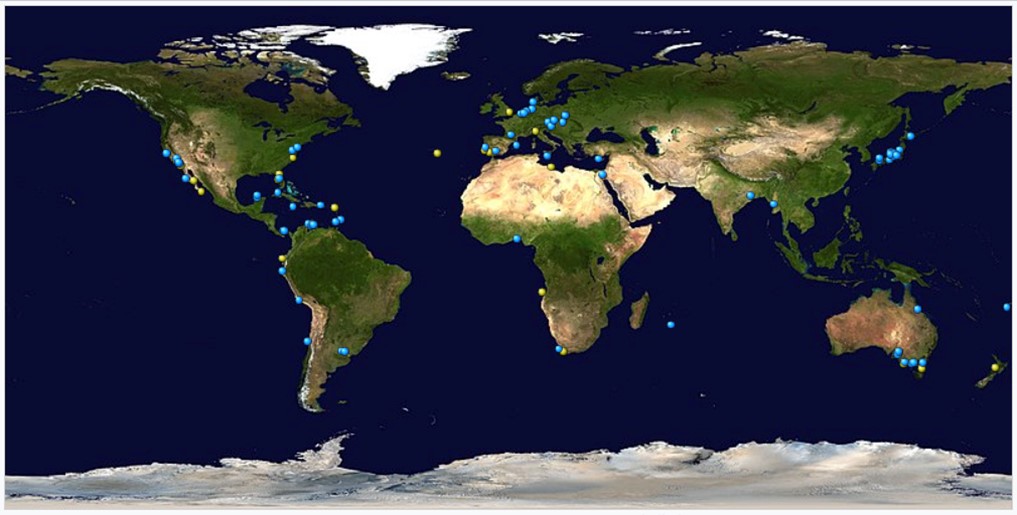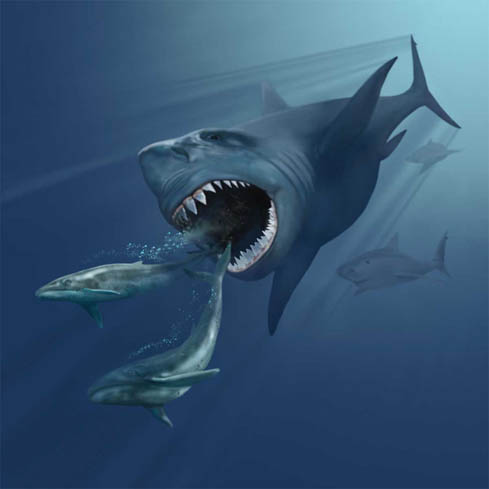
Credit: Reconstruction by Bashford Dean in 1909, enhanced photo, public domain, via Wikimedia Commons
The megalodon, Earth’s largest shark, is thankfully...extinct.
It was twice the length of a school bus. Larger than most of today’s whales and three times the size of the biggest great white shark—with up to 10 times the bite force.
Its jaws were filled with hundreds of six-inch teeth, which fell out and were replaced every few weeks. The megalodon’s large range meant that fossilized teeth have been found around the world.
This fearsome giant prowled Earth’s oceans for 20 million years—and an animal that size required a great deal of food.
Megalodon teeth have been found embedded in fossilized whale bones, and teeth gashes are visible in their petrified vertebrae. But it also could have eaten dolphins, large fish, other sharks...pretty much whatever it wanted.
Then, around 3 million years ago, Earth’s climate and oceans cooled. This killed off a third of most marine animals, especially localized species at the base of the food web.
In turn, that may have restricted the megalodon to a smaller range of warmer tropical waters, where prey continued to thrive.
Researchers believe that megalodon gave birth to their six-foot young in shallow coastal areas. As Earth’s water froze into continental glaciers, sea level fell and many of these areas would have disappeared.
We’ll never know exactly what wiped out this mighty species. But there are plenty of modern ocean creatures that are probably happy it’s gone!
Background
Synopsis: Earth’s largest shark was about twice as long as a typical school bus. With multiple rows of huge, serrated and disposable teeth in its enormous jaws, it was a fearsome apex predator for nearly 20 million years. But 3.6 million years ago, it suddenly became extinct, and scientists can only speculate why that happened.
- Megalodon means large tooth, because that is most of what is left behind of the extinct shark. Like most sharks, its skeleton was made of cartilage so is not usually fossilized.
- Reconstructions of the shark vary because most are projected from the teeth.
- The oldest fossils of megalodon are from the earliest Miocene Epoch at 23 million years old. (It was recently renamed from Carcharocles megalodon to Otodus megalodon.)
- Earth’s largest shark terrorized the oceans for about 20 million years, becoming extinct 3.6 million years ago in the middle of the Pliocene Epoch.
- Megalodon is thought to have been 50 to 60 ft (15–18m) long, larger than modern humpback whales (42–50 ft or 13–15 m) but smaller than blue whales (69–90 ft or 21–27 m).
- It would have been three times as long as the largest modern great white shark at 20 ft (6 m), but most of these sharks range from 11 to 16 ft (3.5–5 m) long.
- Its jaws have been reconstructed at 9 to 11 ft (2.7–3.4 m) wide, large enough to swallow a pair of humans in one gulp.
- Sharks lose a set of teeth every couple weeks, producing up to 40,000 teeth in a lifetime.
- Megalodon’s huge teeth are more than three times as long as those of a great white shark, ranging from 5 to 7 in (14–18 cm).

Megalodon tooth with two great white shark teeth and with a metric ruler showing centimeters.
Credit: Megalodon_tooth_with_great_white_sharks_teeth.jpg: Brocken InagloryBlueRuler_36cm.png: User:Kalanderivative work: Parzi, via Wikimedia Commons - Its jaws were lined with 276 of these teeth in multiple rows, and its crushing bite force has been calculated at 6 to 10 times that of a modern great white shark.

Teeth arranged in a jaw reconstruction for megalodon.
Credit: Gunnar Ries Amphibol, via Wikimedia Commons
- What did megalodon eat? Pretty much anything it wanted! But it was most fond of meat from whales, dolphins, large fish, and other sharks.
- The huge shark would have required a lot of food, and its large, serrated teeth indicate it was a meat eater.
- Megalodon teeth have been found embedded in fossil whale bones and tooth gashes in crushed whale vertebrae.

A fossilized whale vertebra that was bitten in half by a megalodon shows gashes caused by the huge shark’s teeth.
Credit: Jayson Kowinsky, via Wikimedia Commons
- Megalodon lived in warm tropical and subtropical areas.
- Their teeth have been found on every continent except Antarctica.

Locations of megalodon fossil discoveries, yellow = Pliocene and blue = Miocene.
Credit: NASA, public domain, via Wikimedia Commons - Their huge teeth are typically found at the bottom of saltwater creeks, on beaches, and on the sea bottom by divers.
- Their teeth have been found on every continent except Antarctica.
- The youngest megalodon fossil has been recalibrated and dated to 3.6 million years ago, in the middle of Earth’s Pliocene Epoch.
- About 33% of large marine mammals, 43% of turtles and 35% of seagoing birds became extinct at this time as cooling ocean temperatures killed off creatures at the base of the food chain, starving predators.
- As water temperatures cooled, megalodon habitat contracted toward the tropics. While this may have also contributed to prey extinction, if their prey were able to adapt to cooler temperatures, they might escape the sharks by migrating to cooler waters.
- Megalodon sharks are believed to have given birth to babies in coastal waters; so as sea levels dropped in response to ice sheet formation at the poles, these birthing grounds emerged from the sea.

Artistic impression of a 50 to 60 foot (15–18 meters) long megalodon pursuing two Eobalaenoptera whales (typically 35 feet [11 meters] long).
Credit: Karen Carr, via Wikimedia Commons
- Researchers studied fossilized megalodon vertebrae growth rings that demonstrated the subject shark was 46 years old and had been born 6.6 ft long (2 m).
- Like other sharks, stronger babies would cannibalize their weaker siblings in the womb and were born live.
- Researchers estimate that these sharks may have lived up to 88 to 100 years.

